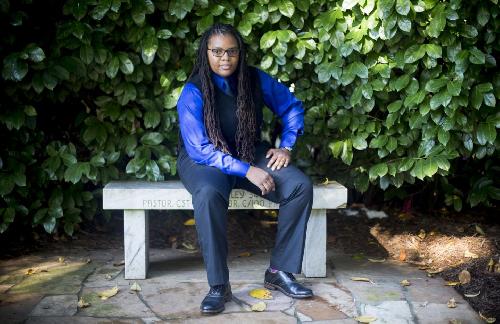When it comes to trust in their physicians, minority groups in the United States are less likely than white people to believe their doctors care about them, according to research by University of Pennsylvania's Abigail Sewell.
"That's one of the biggest takeaways of this work," said Sewell, a Vice Provost Postdoctoral Research Fellow in Penn's Population Studies Center in the School of Arts&Sciences. "African-Americans and Latinos are more likely to think this," though the latter group, she showed, has even deeper mistrust of physicians, likely because one or both Latino parents originally came from somewhere else.
"It reflects the relationship between immigrants and the health-care system," Sewell said. "Most people who are immigrants or have some immigrant connection feel more disenfranchised from the health-care system."

As a sociologist with a background in racial identities and racism, Sewell was interested in what role a person's race plays in his or her experience visiting a doctor. She turned to the General Social Surveys conducted by the National Opinion Research Center in 2002 and 2006, the most recent data available.
The survey cohort consists of 2,800 people 18 and older in the contiguous United States who do not live in institutional settings like jails or mental asylums. In cities across the country, interviewers went door to door asking for volunteers. About seven out of every 10 people agreed to the hour-and-a-half interview.
Sewell then weighted those data to make the sample even more representative. For example, if when the questioners went around, more women were home than the actual percentage of females in this country, she reapportioned the responses. Finally, she analyzed the findings.
"What we have are perceptual data: what patients feel when they go to a doctor. Minorities in general don't have a lot of faith that they're receiving the best care they could," she said. "Number two, and I think more important, the fact that they think their doctors don't care means they feel their doctors aren't taking into consideration their personal lives."
She gives the example of an older woman whose doctor tells her she can't lift more than five pounds for the next two weeks. This woman happens to care daily for her 18-month-old grandchild, who weighs 20 pounds. "Doctors are trained to see symptoms, they're trained to follow a set of recommended behavior," Sewell said. But to patients of a particular background, this can come across as a physician ignoring anything else. Sewell calls this structural competency.
"This captures where people live. Not just where they live as far as place, but the where and the how. They may live in poverty or have two jobs or live with three generations. They may still be working at age 65."
Physicians paying attention to structural competency, a movement that's gaining some traction, she said, goes beyond looking at people's culture, to their neighborhoods, to the institutions they care about, to the policies that affect them.
"The very likelihood of being sick is actually shaped by the world that we live in, not just the biological processes," Sewell said. "Structural competency aims to develop a language at a level above the patient."
Sewell's next phase of this research will look at how patients use social media and other technology to better understand health information. The current findings, funded by fellowships from the National Science Foundation, the Ford Foundation and Indiana University, were published as the lead article in the journal Social Science Research.






Comments